The Big Six (hint -- they are birds!)
- Barbara Seith

- Jul 14
- 3 min read
Where the big 5 represent the 5 game species that were most desired as hunter’s trophies in times gone past and now represent the 5 species that visitors to Kruger (or other classic African savannah parks) most want to see, the big 6 represent a subjective grouping of the 6 most desired birds that visitors to Kruger want to see. It is aimed at the layman birder, and hence the species are easy to identify and instantly recognizable. The species are also by and large restricted to Kruger and other conservation areas, as human encroachment; habitat degradation etc. has reduced their ranges.
Five of the six are seen relatively easily in the park and are found throughout the park i.e. Lappet-faced vulture, Martial eagle, Saddle-billed stork, Kori bustard and Ground hornbill. The one curve ball is the Pel’s fishing owl, which is seldom seen, because of its nocturnal habits and restriction to large watercourses.
Spoiler Alert -- we saw all Six!
Kori Bustard - we saw this bird three separate times if we don't count the dead one we found near the end of the trip. Its the biggest Bustard and we got lots of quality time with them. It is one of the heaviest flying birds in the world weighing as much as 42 pounds.

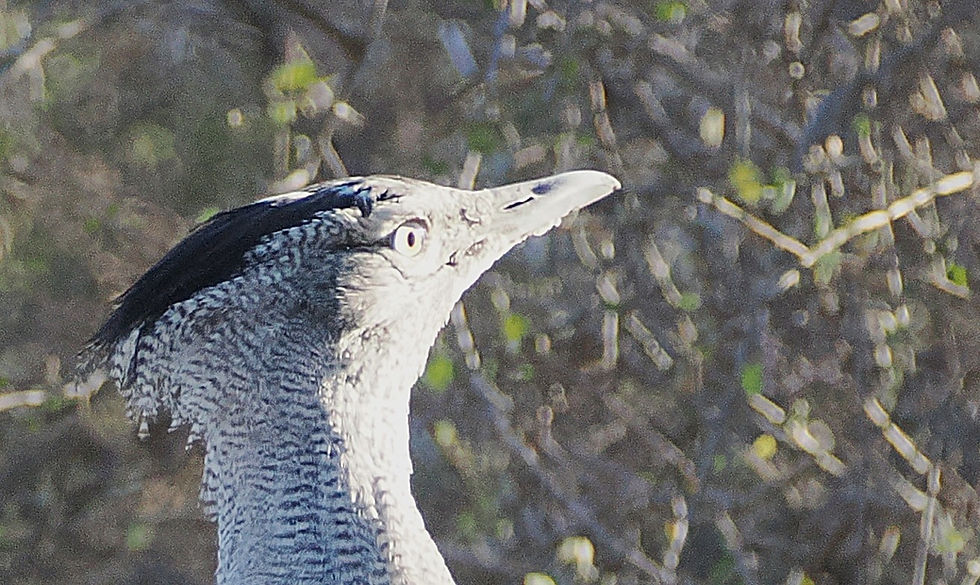
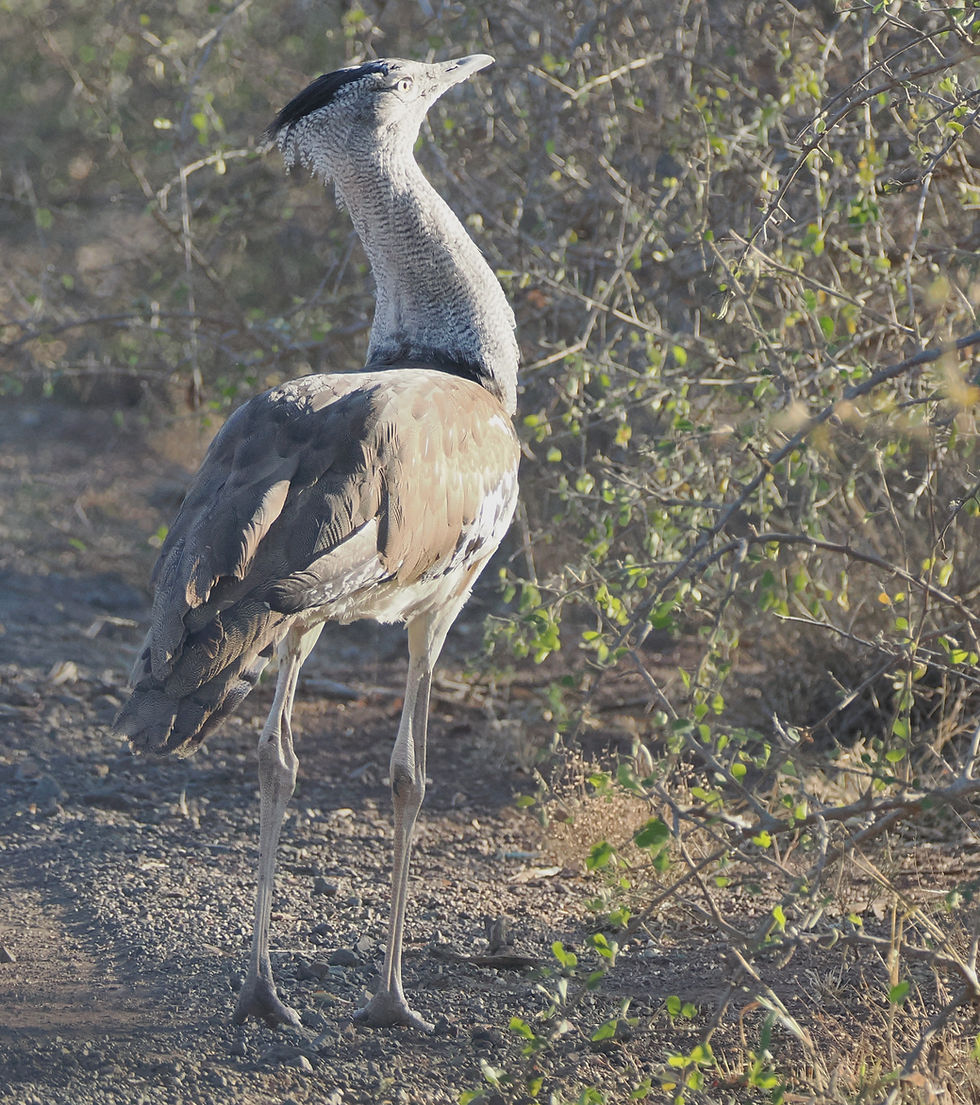

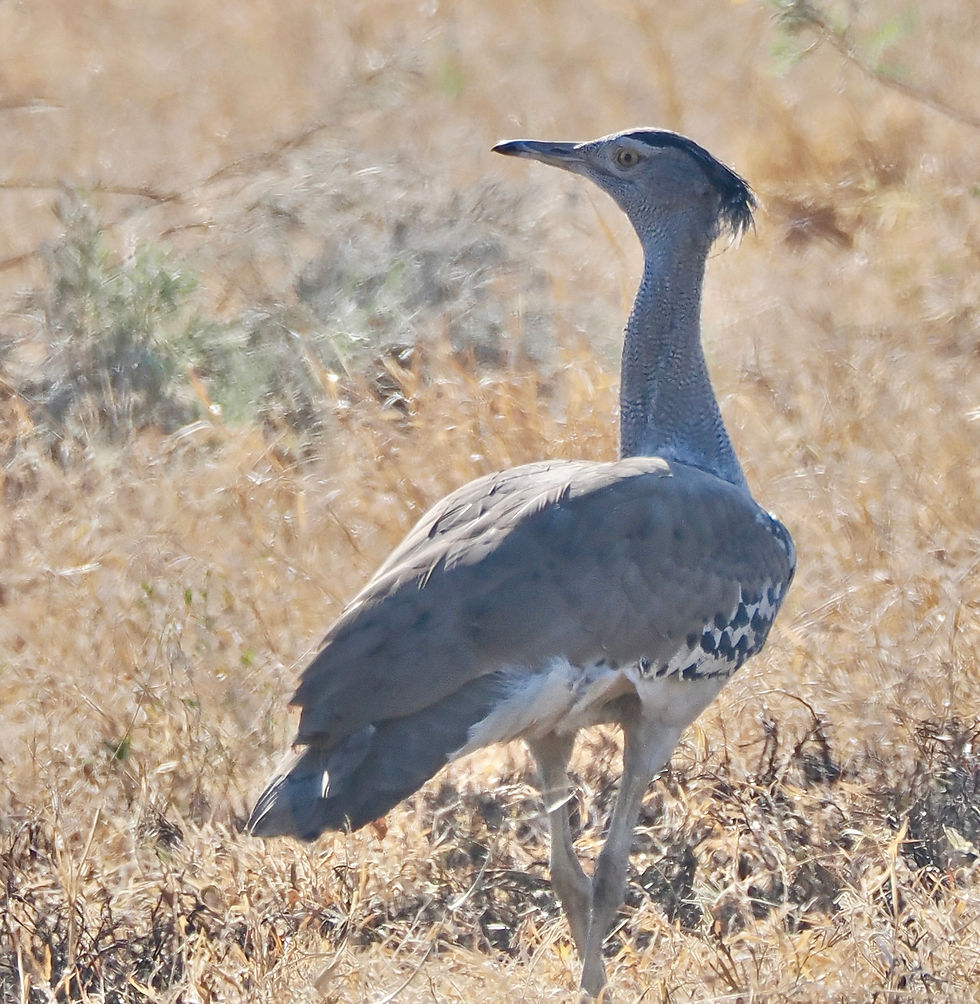

I love that I was able to capture this Kori's Bustard framed in Elephant!

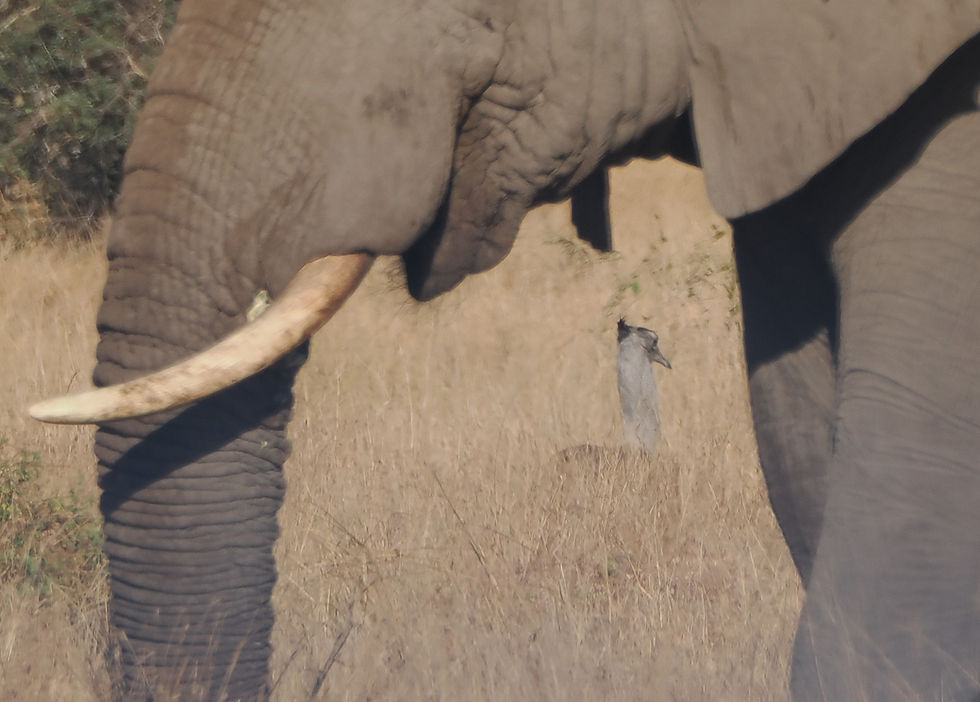
Martial Eagle - we were treated to 9 separate sightings of this magnificent bird, including one while mating (apparently very rarely captured - see posting labeled "Blue Edition"). This is Africa's biggest eagle with a wingspan of close to 8 feet. It eats reptiles, large birds & medium sized mammals. It has been known to kill Jackals & Caracol.
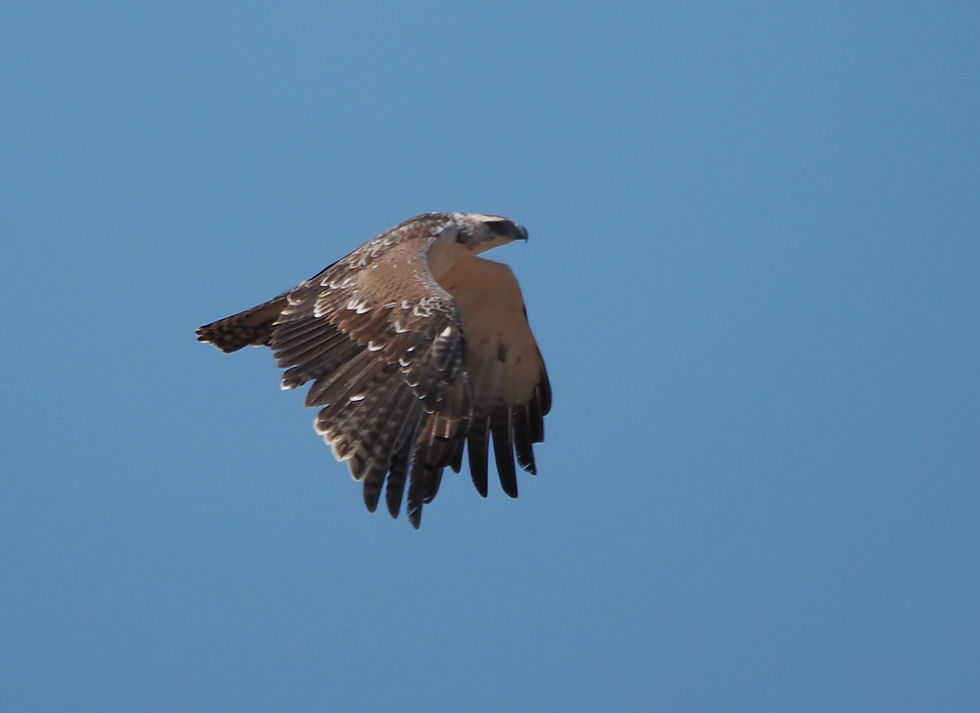

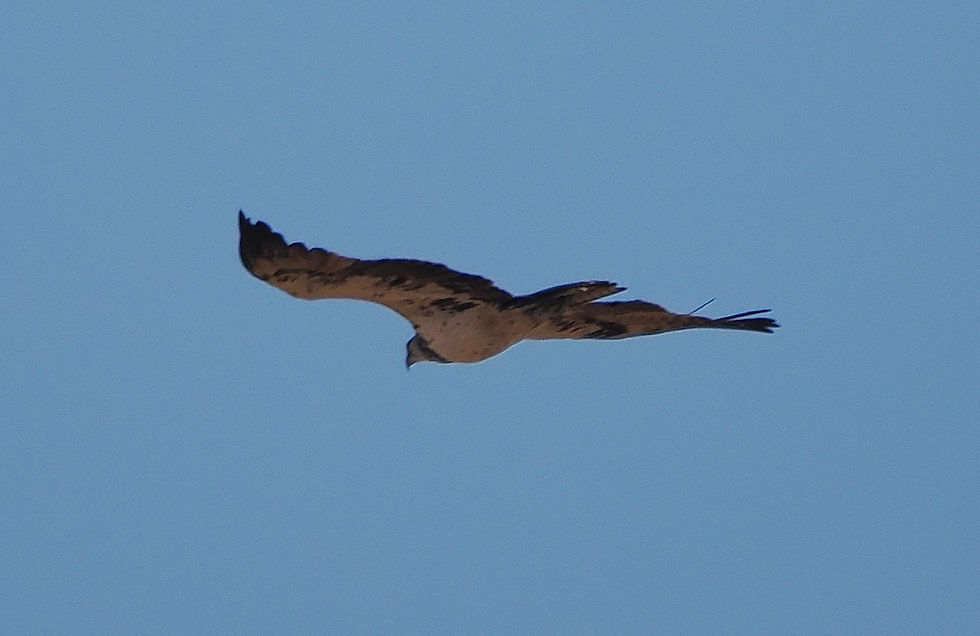
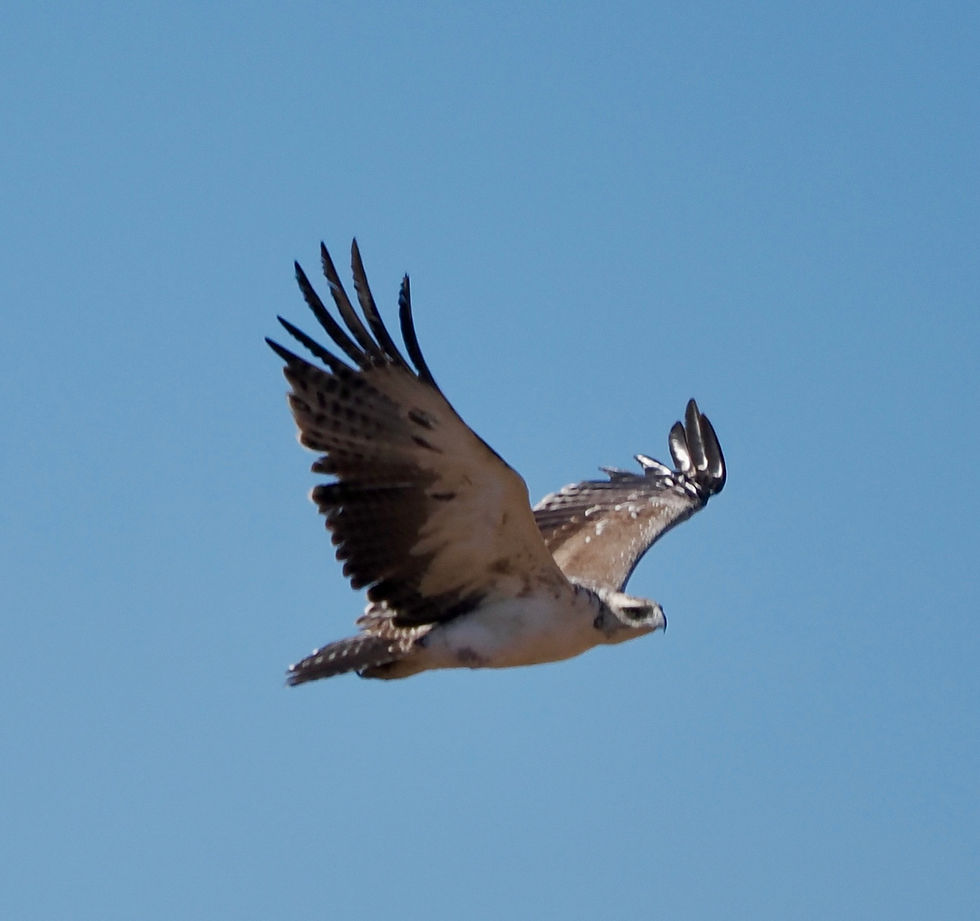
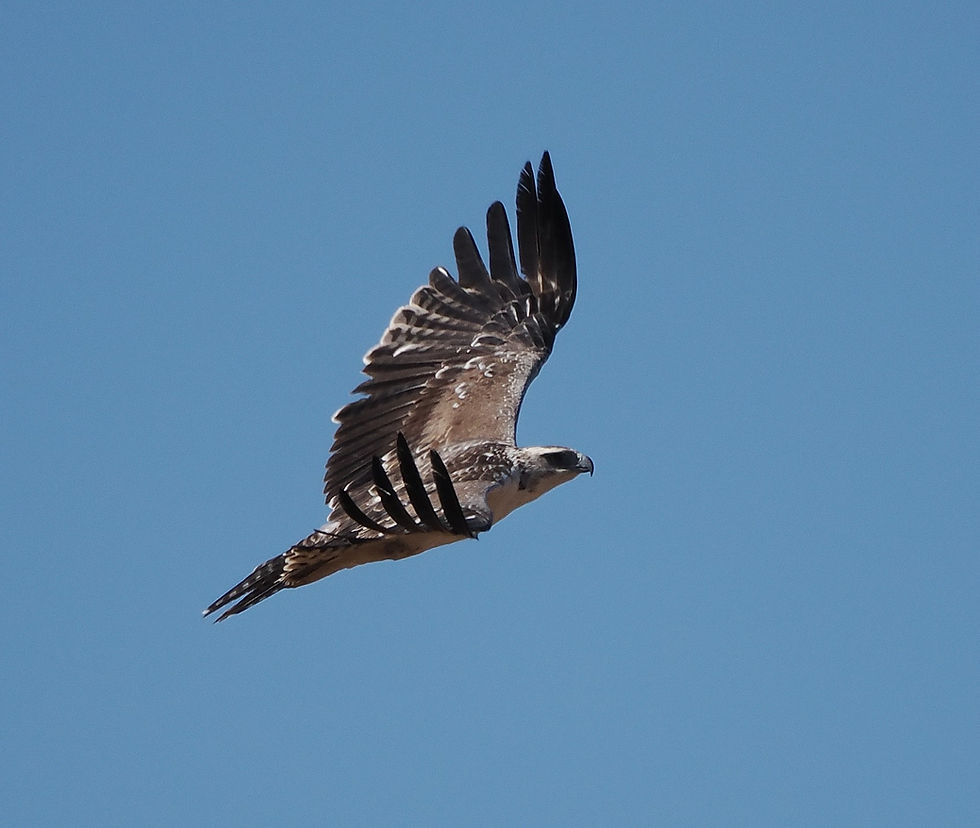
Southern Ground Hornbill - the largest Hornbill at up to 4.2 feet and they live 30-40 years. Their wattle reminds me of a Wild Turkey. They eat everything from insects to hares. The have a deep Hooty call -- it is LOUD! My favorite feature is their eyelashes which are actually feathers, but surround the eye and long...

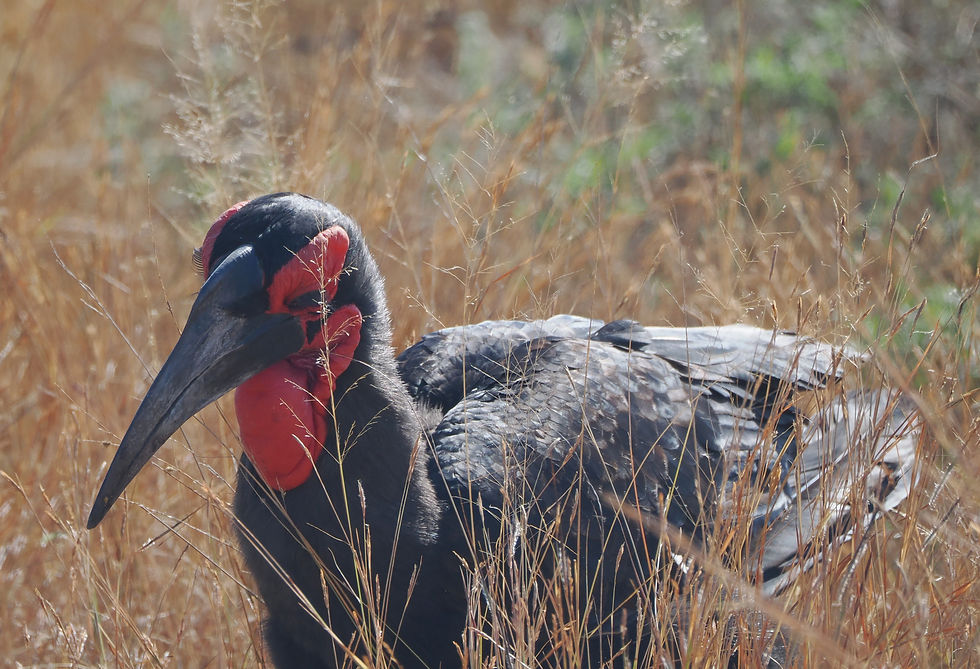
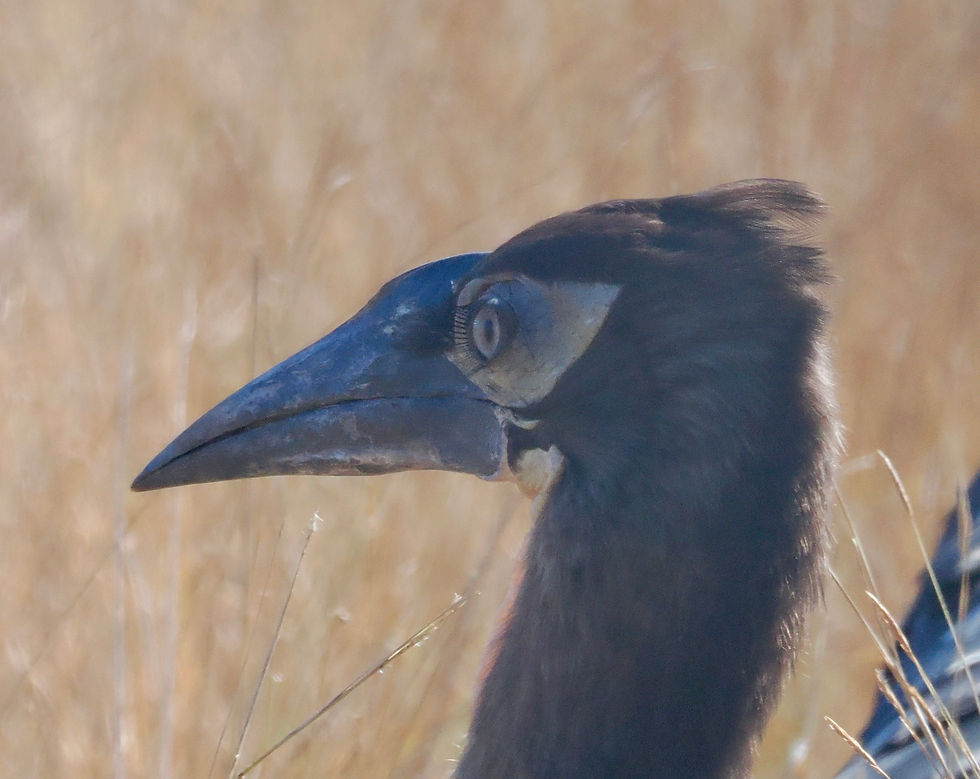
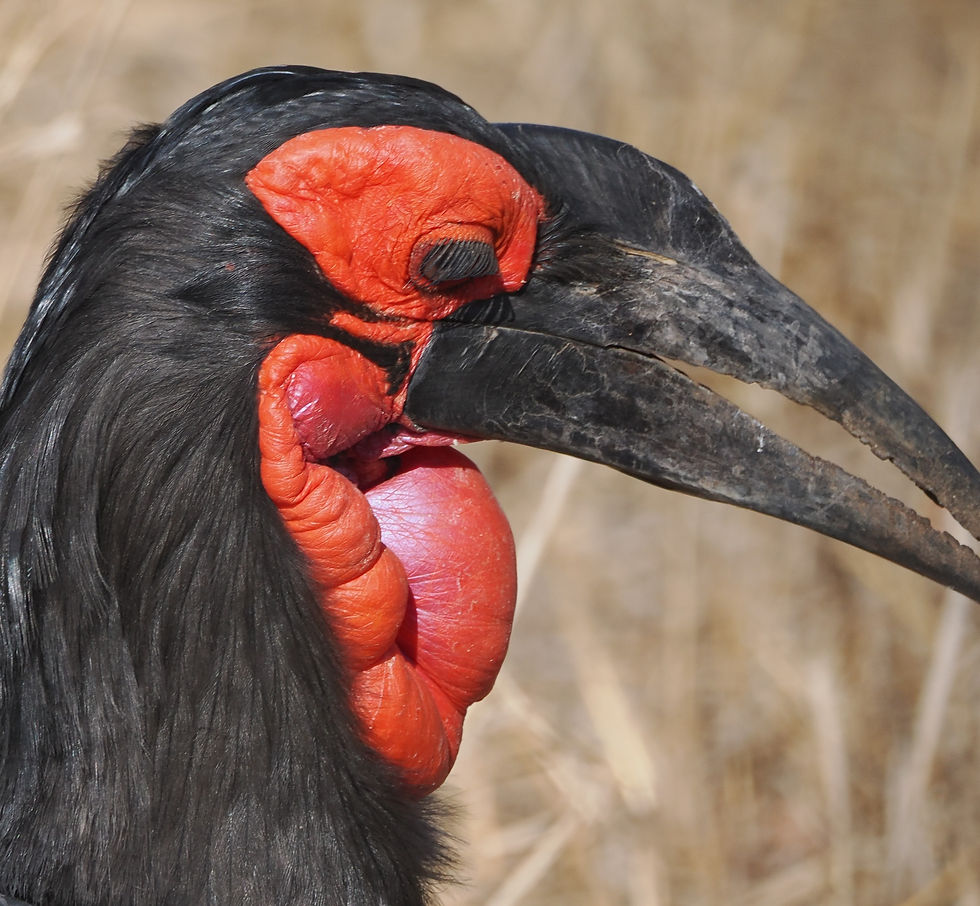
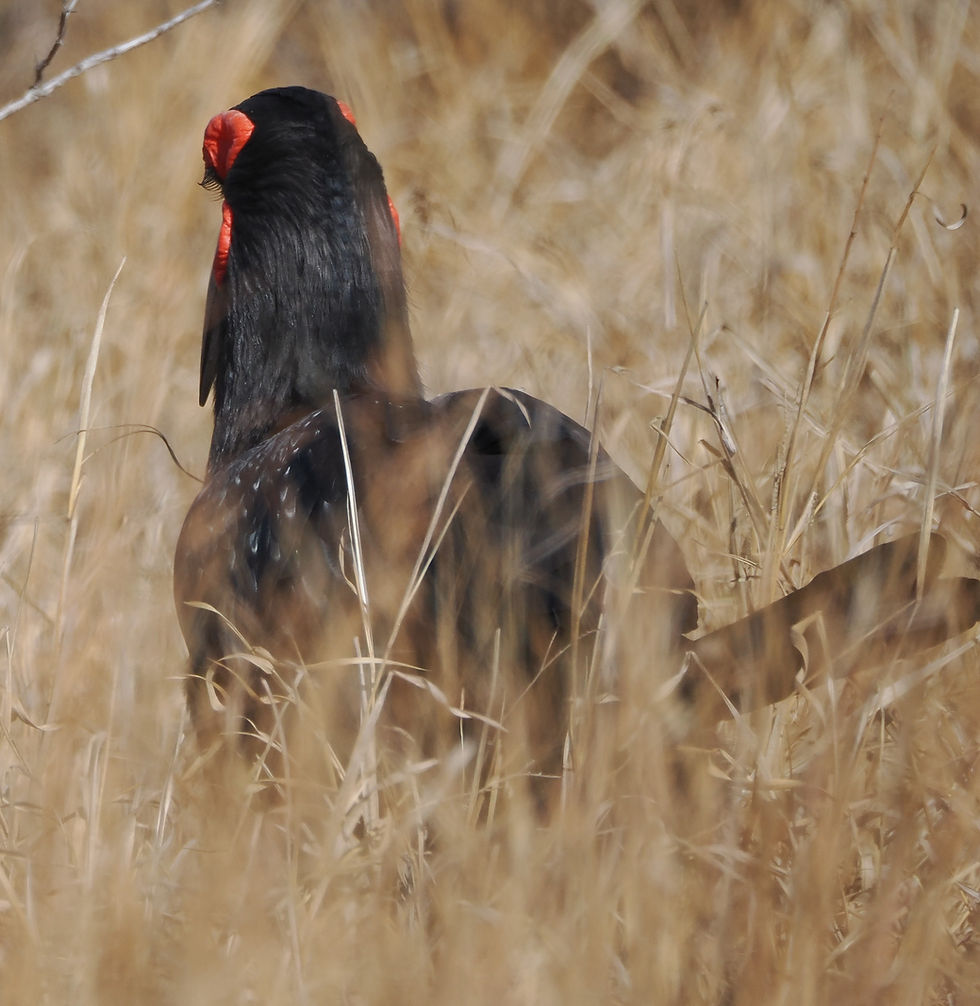







Pel's Fishing Owl - There are only about 70-100 of these birds in all of the park. They eat (surprise...) fish, although they supplement with frogs or even baby crocs. They look like a big teddy bear and have amazing wide eyes. We were lucky to see the same individual twice in one day.
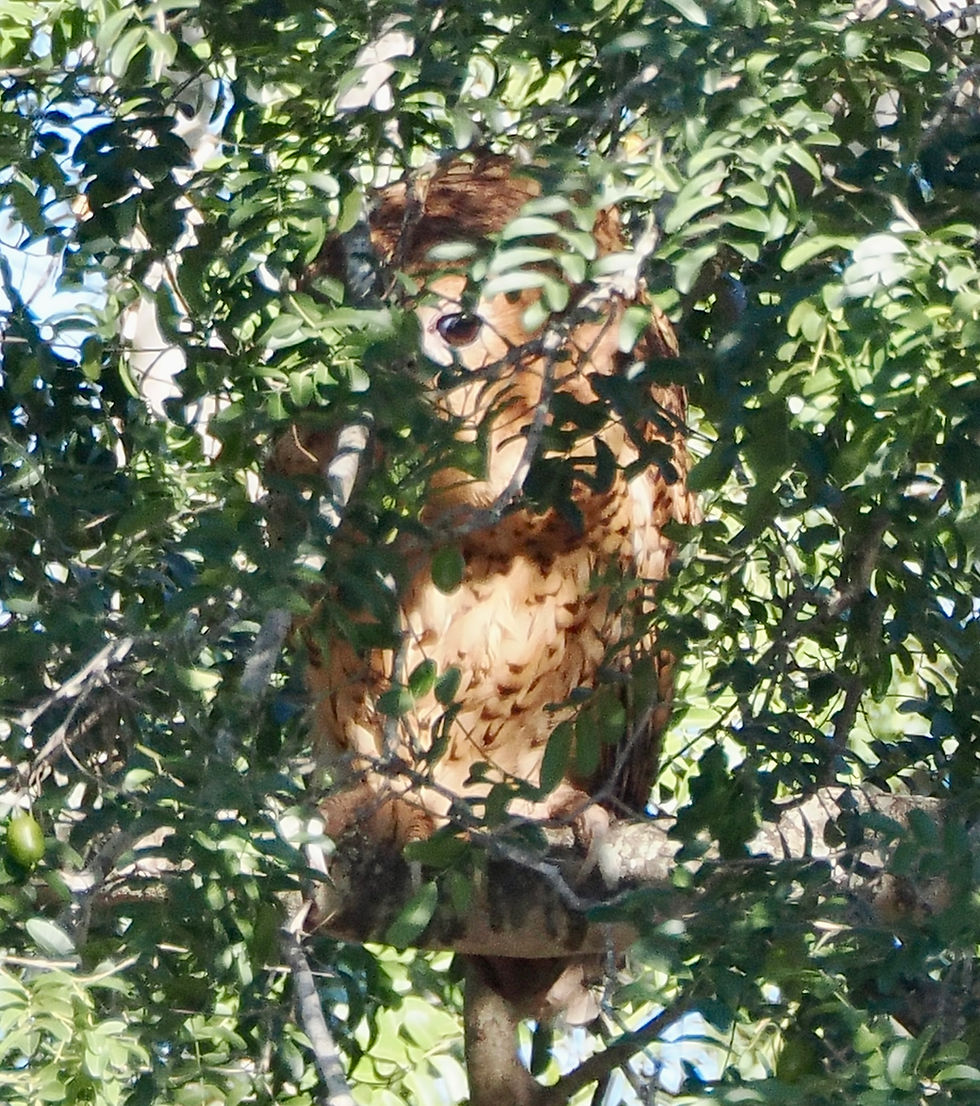


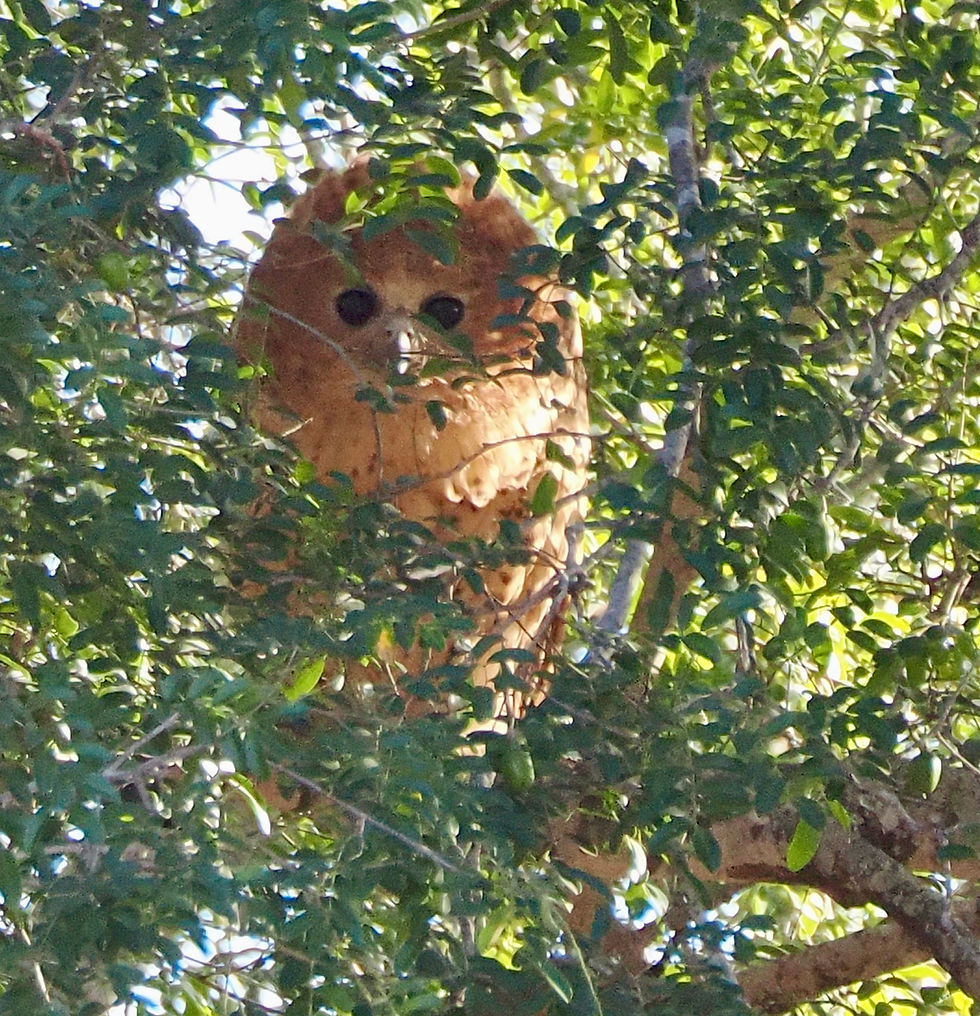

Saddle-billed Stork - We saw this species on 6 separate occasions, but never in a good spot to photograph. Since I already had good shots from the previous trip, I didn't bother taking another one. There is a large population year round at Kruger. Only the males have the yellow wattle that gives this bird a "Saddle" look. It has almost a 9 foot wingspan which is very impressive when flying. I love it's dark pink knees & feet.
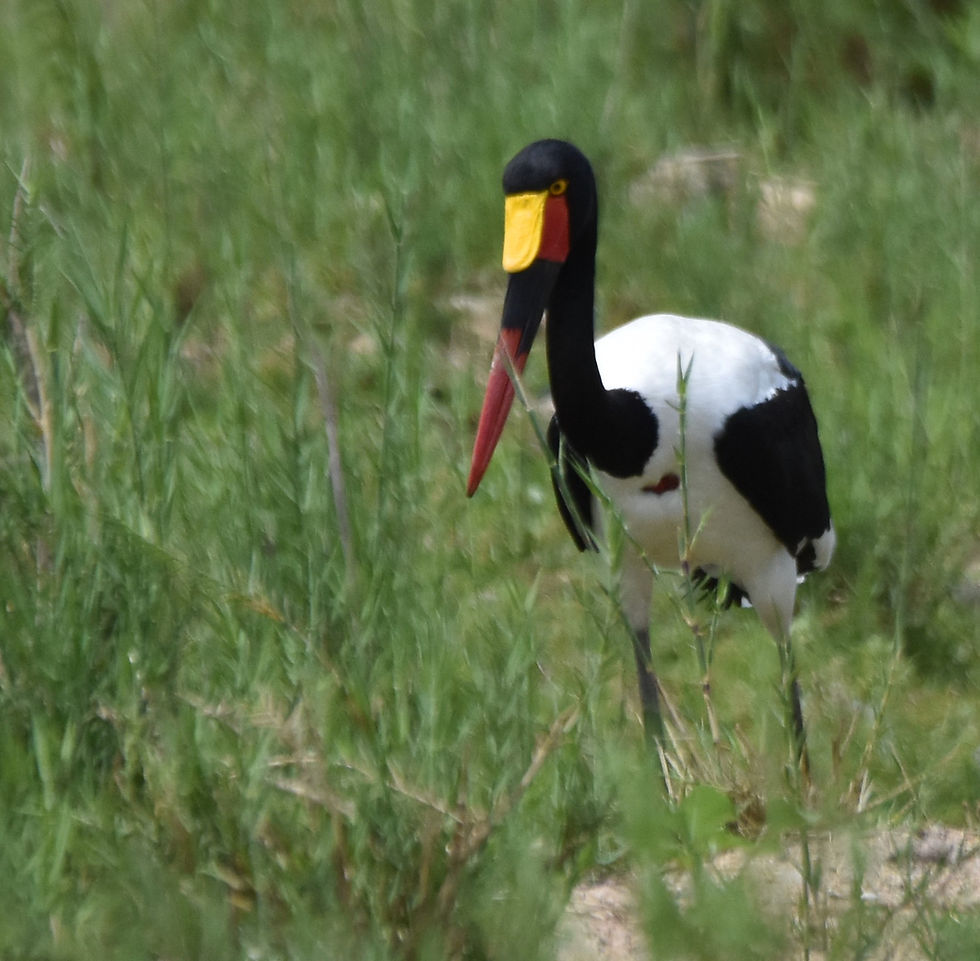
Lappet-faced Vulture - They were flying in a kettle with White-backed Vultures on the first day, but this photo from my first trip is much better. It is the biggest raptor in South Africa weighing up to 20 pounds with a wingspan up to 9.2 feet. It has a narrow white band near the front of the wing which is easy to identify when observing them in flight. Its appropriately creepy looking for a vulture.

So that's it -- nice to polish off this list.



Comments